Osprey Paris
Hallmarks
Deciphering French hallmarks is not easy: they are small and often worn, especially on rings. The identification of an official hallmark can nevertheless make it possible to date a jewel approximately and sometimes, by cross-referencing the hallmark with the maker’s mark, if the period of activity of the latter is known, it’s possible to refine even more the date of a jewel.
Before the French Revolution in 1789, the hallmarking of precious metal objects was carried out by the guilds in each town.
After the revolution, government operated hallmark offices were set up, and they tested precious metals and stamped them, both to certify the quality and to attest to the payment of taxes. From 1798 to 1838, there were always two official hallmarks on an object – the title hallmark which certifies the purity of the metal and also the guarantee hallmark which attests to the payment of the tax. There was also a third hallmark, the maker’s mark of the goldsmith.
Since 1838, a single official hallmark along with the goldsmith’s mark is sufficient. The Parisian guarantee hallmarks are often of a different shape to those of the provinces and from 1809 the hallmarks are provided with numbers or small symbols called assay office marks (différents in French), which specify the city of the hallmark office (indicated by an “X » on the drawings).
The title stamp was stamped exclusively on works of which the carat was absolutely guaranteed following precision tests. On the other hand, the small guarantee hallmarks were affixed to works tested with a touchstone, and whose purity was close to the minimum legal title.
The hallmarks of guarantee were stamped to certify the payment of the tax. This tax was not negligible, equivalent today to around four or five euros per gram for gold items. There was, therefore, an interest for unscrupulous goldsmiths to avoid the payment and a constant game of cat and mouse existed with stolen or fake hallmarks, verifications and fines.
Since 1795, the goldsmith’s mark, known as the “maker’s mark,” must be in the shape of a diamond for precious metal objects. Called “responsibility hallmark”, it is oval in shape for imported jewellery, while for rolled gold or for gold or silver plated jewellery, the hallmark is square or oblong for French and foreign manufacturers respectively.
The designs on this site are shown in yellow for gold and in gray for silver, although in some cases the same hallmark was used for both metals. Not all the hallmarks in the book Traditional French Jewellery have been uploaded at the moment, more will be added as time permits.
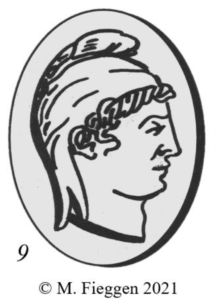
009. Liberty head hallmark to the right in an oval frame
Hallmark of Liberty’s head to the right in an oval frame. Recall hallmark for large objects in gold and silver. Paris 1797. The information on
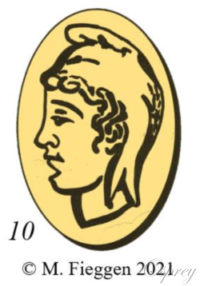
010. Hallmark of Liberty’s head to the left in an oval frame.
Hallmark of Liberty’s head to the left in an oval frame. 1797 recall hallmark for small items in gold and silver. Paris 1797. The information
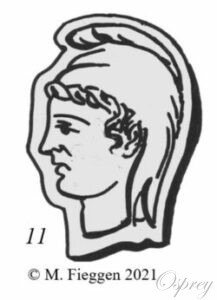
011. Liberty head hallmark to the left in a shaped border
Liberty head hallmark to the left surrounded by a shaped border. 1797 recall mark of large objects in gold and silver. Departments of France 1797.
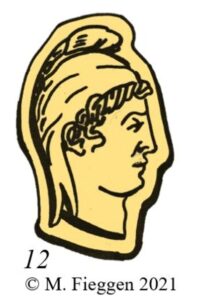
012. Liberty head hallmark looking right in a shaped border
Liberty head hallmark to the right, surrounded by a shaped border. Recall hallmark for small objects in gold and silver. Departments of France in 1797.
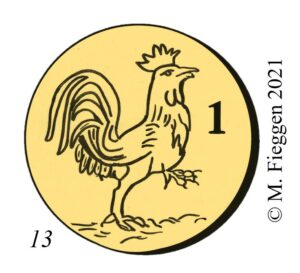
013. Raised leg rooster hallmark on the right in a round frame
Raised leg rooster hallmark right in a round frame. Number 1 in front of the rooster’s chest for 1st title gold (920/000). Paris June 19,
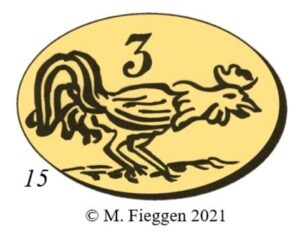
015. Hallmark of a rooster pecking to the right, oval frame
Hallmark of a rooster pecking to the right in an oval frame, Paris. Number 3 over the back of the rooster for gold 3rd title
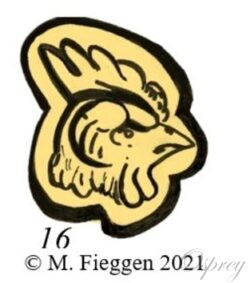
016. Rooster head hallmark with closed beak on the right
Rooster’s head hallmark with closed beak to the right, surrounded by a shaped border, for small gold objects. Paris June 19, 1798 to August 31,
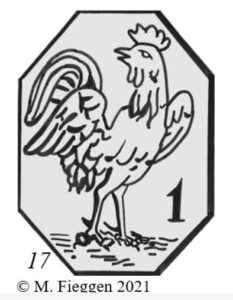
017. Rooster hallmark right turning head, wings open
Rooster hallmark to the right turning its head, wings open in an irregular octagon, number 1 for 1st title silver (950/000) on the right. Paris
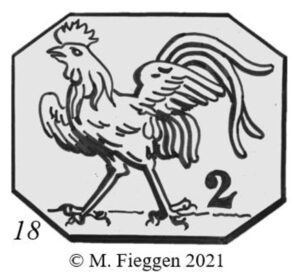
018. Running rooster hallmark to the left with number on the right
Running rooster hallmark on the left with number on the right in an irregular octagon, number 2 for 2nd title silver (800/000) on the right.
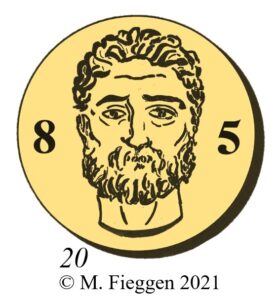
020. Hallmark of an old man’s head, facing, round frame
Hallmark of an old man’s head from the front in a round frame for medium-sized objects in gold and silver. Figure 85 for Paris, other
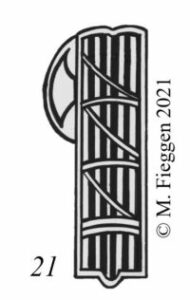
021. Hallmark of lictor fasces with axe head to the left
Hallmark of lictor fasces with axe head to the left and three groups of horizontal bands, surrounded by a border. For small silver articles. Paris
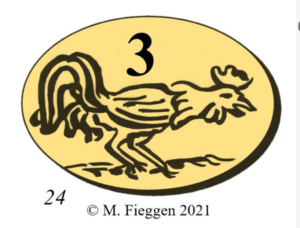
024. Right pecking rooster hallmark, oval frame, Dep
Hallmark of a pecking rooster facing to the right in an oval frame. Number 3 on the back of the rooster for 3rd grade gold
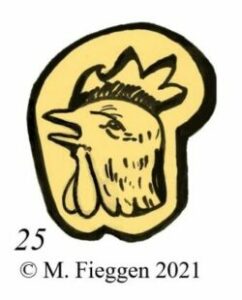
025. Rooster’s head hallmark to the left with open beak and border
Rooster’s head hallmark to the left with open beak with border. For small gold objects. For the departments from June 19, 1798 to August 31,
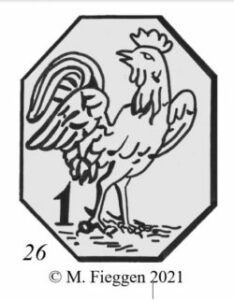
026. Rooster hallmark to the right with turning head
Hallmark of rooster to the right turning its head, in an irregular octagon, number 1 for 1st grade silver (950/000) on the left. Departments June
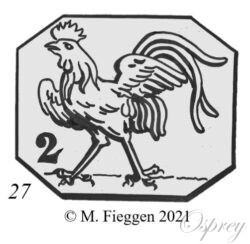
027. Running rooster hallmark to the left with number 2 on the left
Running rooster hallmark to the left with number 2 on the left in an irregular octagon, number 2 for 2nd title silver (800/000) on the
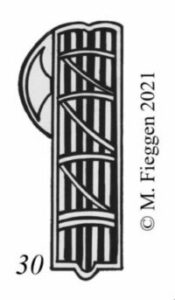
030. Hallmark of lictor fasces with axe head on the left
Hallmark of lictor fasces with axe head on the left with four horizontal bands surrounded by a border. For small silver articles. Similar in appearance
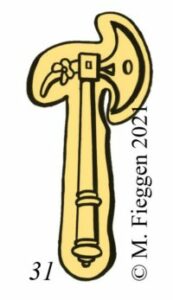
031. Axe hallmark to the right surrounded by a border
Axe hallmark to the right surrounded by a border, so-called “hazard” hallmark stamped on second-hand objects. Paris and departments, 1798-1819. The axe hallmark to the
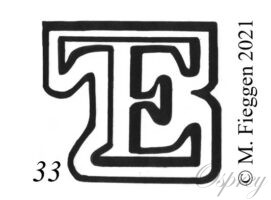
033. ET monogram hallmark surrounded by a border
ET monogram hallmark surrounded by a border, the shape of the border is variable. For small imported objects. Paris and departments from June 19, 1798
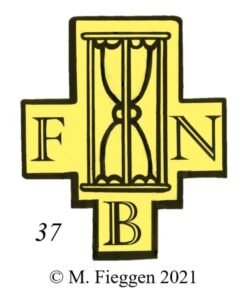
037. Hourglass hallmark with the letters FNB
Hourglass hallmark with the letters FNB (for Fabrique Nationale de Besançon), the whole surrounded by a border. For watchmaking in Besançon, large works in 750/000
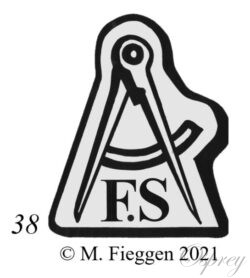
038. Compass hallmark above the letters FS
Compass hallmark above the letters FS (for Fidelity Security) surrounded by a shaped border. For Besançon watchmaking, small objects in 750/000 gold or 800/000 silver.
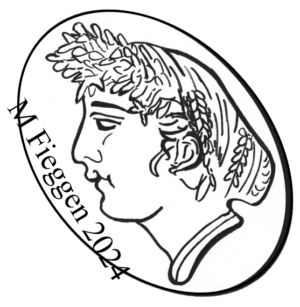
039. Ceres head hallmark to the left
Ceres head hallmark to the left in a left-leaning oval frame. Recall hallmark for large objects in gold and silver. Paris 1809. The information on
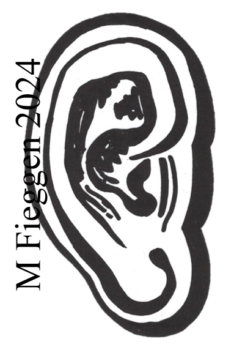
040. Right ear hallmark surrounded by a border
Right ear hallmark surrounded by a border, recall hallmark for medium-sized objects in gold and silver. Paris 1809. The information on the right ear hallmark
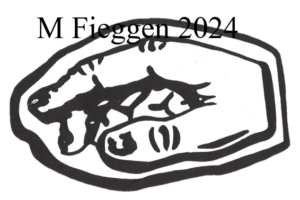
041. Indicative right hand hallmark pointing left
Right hand hallmark pointing to the left, surrounded by a border. Recall hallmark for small objects in gold and silver. Paris 1809. The information on
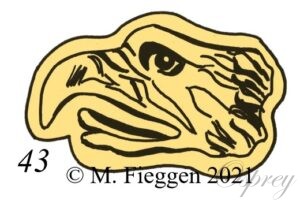
043. Eagle’s head hallmark to the left
Poinçon de tête d’aigle à gauche, le bec ouvert, entouré d’une bordure. Recall hallmark for medium-sized objects in gold and silver. Departments, 1809. The information
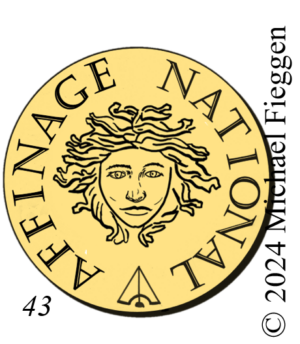
043. Hallmark of head surrounded by the words Garantie National
Hallmark of head surrounded by the words Affinage National, in a round frame. For gold bars, Paris and departments 1798-1809. The information on the head
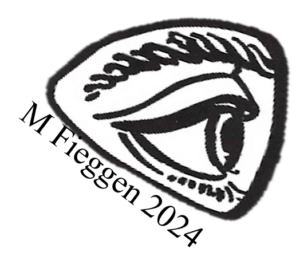
044. Eye hallmark in profile to the right
Eye hallmark in profile to the right, surrounded by a listel. Census or recall hallmark of small works in gold and silver. Departments, 1809. The
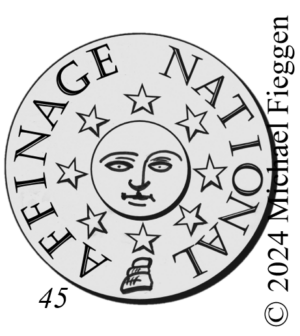
045. Hallmark of a smiling Moon surrounded by the words Affinage National
Hallmark of a smiling Moon surrounded by the words Affinage National, in a round frame. For silver bullion, Paris and departments, from June 19, 1798
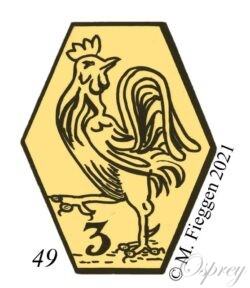
049. Rooster hallmark with leg raised, head turned to the right
Rooster hallmark with raised leg, head turned to the right in a hexagonal frame, number 3 for 3rd grade gold ( 750/000 ). Paris 1809-1819.
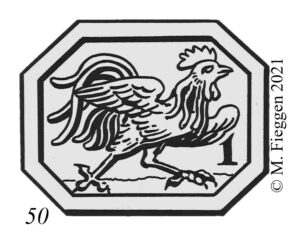
050. Rooster hallmark attacking to the right, octagonal frame
Hallmark of rooster attacking to the right in an irregular octagon surrounded by a border, number 1 under wing for silver 1st title (950/000). Paris
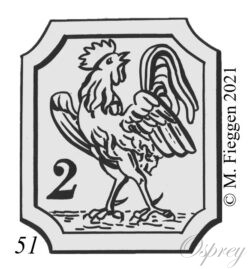
051. Standing rooster hallmark with head turned back
Rooster hallmark standing with the head turned backwards in an irregular octagon with a border, 2 under the wing for 2nd title silver (800). Paris
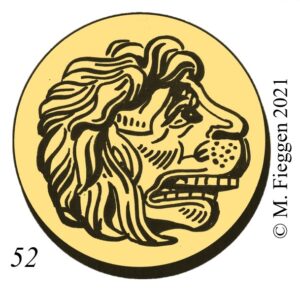
052. Lion’s head hallmark to the right in a round frame
Lion’s head hallmark to the right in a round frame, large gold guarantee mark. Used in Paris between 1809 and 1819. The information on the
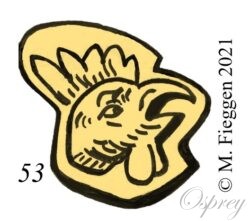
053. Rooster head hallmark to the right with open beak
Rooster’s head hallmark to the right with open beak surrounded by a border, for small gold guarantee with trimmings. Paris 1809-1819. The information on the
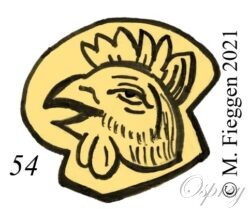
054. Rooster head hallmark to the left with open beak
Rooster’s head hallmark to the left with the beak open surrounded by a border, for small gold guarantee without trimmings. Paris 1809-1819. The information on
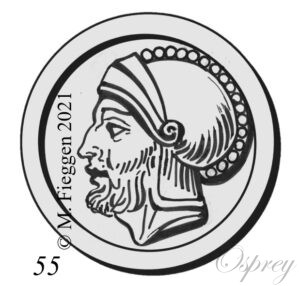
055. Helmeted warrior head hallmark
Hallmark of a helmeted warrior’s head turned to the left in a round frame with a border. For large silver guarantee. Paris 1809-1819. Information on
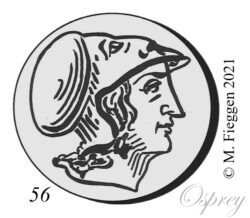
056. Minerva’s head hallmark to the right with a round frame
Hallmark of Minerva’s head to the right in a round frame, medium silver guarantee. Used in Paris from 1809 to 1819. The information on the
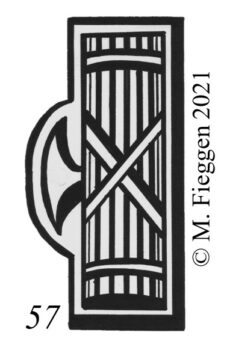
057. Lictor fasces hallmark with central axe
Hallmark of lictor fasces with axe in the centre to the left, surrounded by a border, for small silver guarantee. Paris 1809-1819. The information on
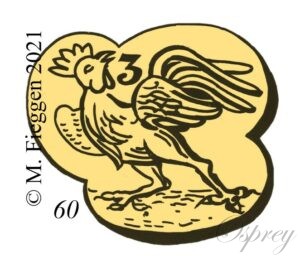
060. Rooster punch standing in trilobal frame
Standing rooster hallmark in a trilobed frame, number 3 to the right of the head for 3rd grade gold ( 750/000 ). Departments 1809-1819. Information
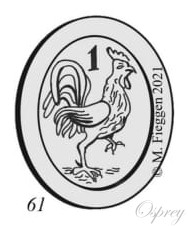
061. Standing rooster with raised leg hallmark
Hallmark of a rooster standing with its foot raised, in an oval frame surrounded by a border, number 1 for 1st grade silver (950/000). Departments
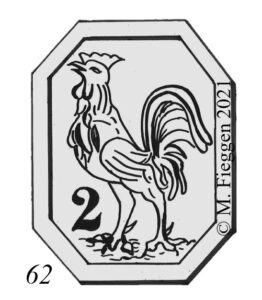
062. Hallmark of crowing rooster to the left
Hallmark of crowing rooster to the left in an irregular octagon surrounded by a border, number 2 for 2nd grade silver (800/000). Departments from September
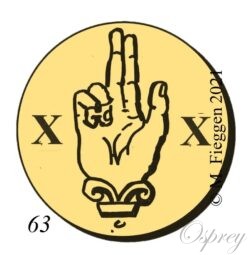
063. Hand of justice hallmark in a round frame
Hallmark of the hand of justice in a round frame, for large gold guarantee. Departments of France from 1809-1819. The information on the hallmark of
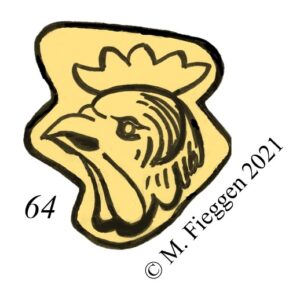
064. Rooster’s head hallmark to the left with the beak closed
Rooster’s head hallmark to the left, beak closed, surrounded by a border. This rooster’s head hallmark to the left indicates small gold guarantee with trimmings.
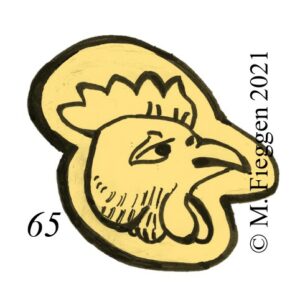
065. Rooster head hallmark to the right with the beak closed
Rooster’s head hallmark to the right, the beak closed, surrounded by a shaped border. Small gold guarantee without trimmings. Departments 1809-1819. The information on the
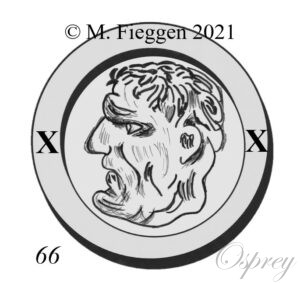
066. Hallmark of a man’s head on the left in a round frame
Hallmark of a man’s head to the left in a round frame, assay office mark inscribed in the listel, for large silver guarantee. Departments 1809-1819.
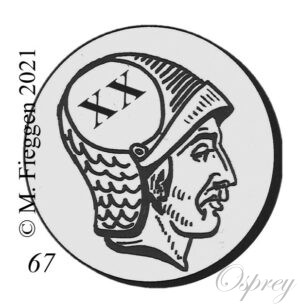
067. Punch of a warrior’s head to the right in a round frame
Hallmark of a warrior’s head to the right in a round frame, assay office mark inscribed on the helmet, for an average silver guarantee. Departments
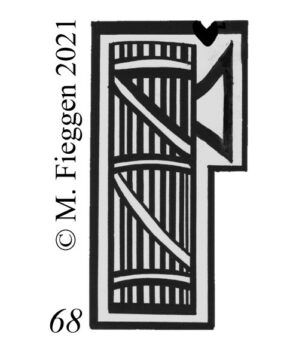
068. Lictor fasces hallmark with axe at upper right
Lictor fasces hallmark with axe at the top right, surrounded by a border. Small silver guarantee. Departments 1809-1819. The information on the lictor fasces hallmark
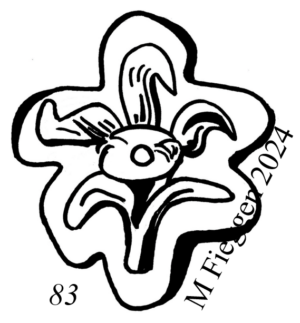
070. Pimpernel flower hallmark in a 6-lobed frame
Pimpernel flower hallmark in a six-lobed frame. Recall mark for Paris of 1819. Information about the pimpernel flower hallmark and the other illustrations of hallmarks
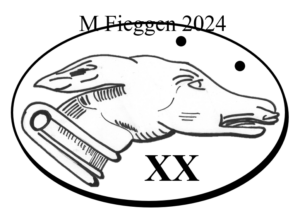
071. Greyhound’s head hallmark to the right in an oval frame
Greyhound’s head hallmark to the right in an oval frame, assay office number below the head. Recall mark of 1819 for large items in gold
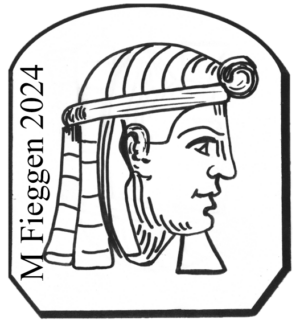
072. Hallmark of an Egyptian’s head to the right
Hallmark of an Egyptian’s head to the right in an octagonal frame truncated at the top. Large gold and silver foreign guarantee. Paris 1819-1838. The
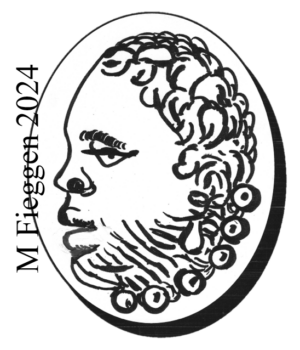
073. African man’s head hallmark to the left in an oval frame
African man’s head hallmark to the left in an oval frame. Guarantee of small gold and silver imports. Paris 1819-1838. The information on the African
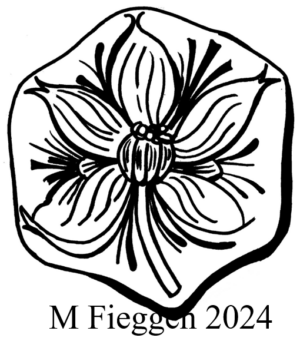
074. Poppy flower hallmark in a shaped frame
Poppy flower hallmark in a shaped frame. Guarantee hallmark for large imported objects. Departments of France from 1819 to 1838. Poppy flower hallmark and the other
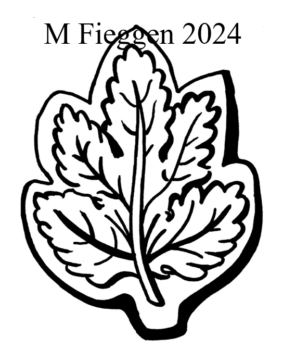
075. Leaf hallmark in an irregularly shaped frame
Leaf hallmark in an irregularly shaped frame. Guarantee mark for small imported items. Departments 1819-1838. Information of the leaf hallmark and the other illustrations of
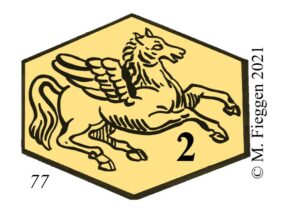
077. Hallmark of Pegasus rearing to the right, hexagonal frame
Hallmark of Pegasus rearing to the right in an irregular hexagonal frame, number 2 between the legs, for 2nd grade gold (840/000). Paris 1819-1838. The
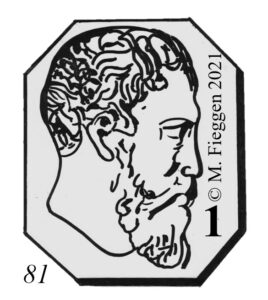
081. Hallmark of Michelangelo facing right
Hallmark of Michelangelo’s head facing right in an irregular octagonal frame, number 1 for 1st grade silver (950/000). Paris 1819-1838. The information on the
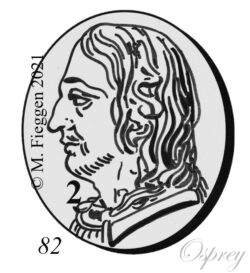
082. Raphaël’s head hallmark facing left
Raphaël’s head hallmark facing left in an oval frame, number 2 for 2nd title silver (800/000). Paris 1819-1838. The information on Raphael’s head hallmark facing
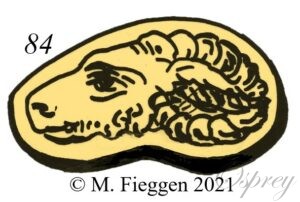
084. Ram’s head hallmark facing left
Ram’s head hallmark to the left surrounded by a listel, for small gold works. Variable shape following the many false hallmark punches of the time.
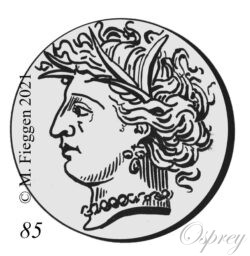
085. Hallmark of Ceres facing left in a round frame.
Hallmark of Ceres facing left in a round frame. Guarantee of large objects in silver. Paris 1819-1838. The information on the head of Ceres hallmark
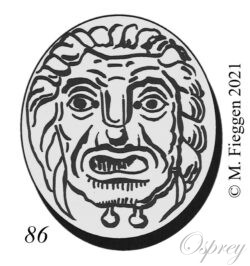
086. Theatrical mask hallmark in an oval frame
Theatrical mask hallmark in an oval frame. Guarantee mark of medium-sized items in silver. Paris between 1819 and 1838. Information on the theatrical mask hallmark
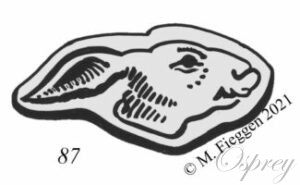
087. Hare’s head hallmark to the right
Hare’s head hallmark to the right surrounded by a shaped border. Guarantee mark of small items of silver. Paris 1819-1838. The information on the hare’s
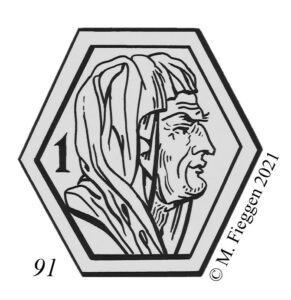
091. Hallmark of an old woman’s head to the right
Hallmark of an old woman’s head to the right in an irregular hexagonal frame surrounded by a border, number 1 for 1st grade silver (950/000).
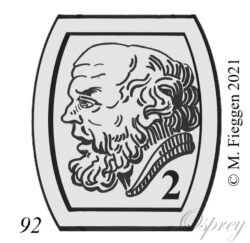
092. Hallmark of Socrates facing left
92 . Hallmark of Socrates’ head facing left in a truncated oval-shaped frame surrounded by a listel, number 2 under the neck for 2nd title
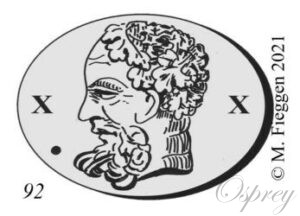
092. Hercules head hallmark
Hercules head hallmark facing left in an oval frame, with figures for the various assay offices. For large silver objects Departments 1819-1838. This hallmark is
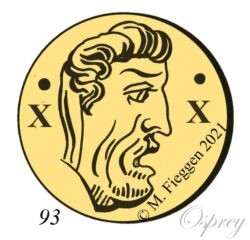
093. Bacchic mask hallmark facing right
Bacchic mask hallmark facing right in a round frame with numbers indicating the assay offices. Guarantee mark for large gold items. Departments 1819-1838. Information on
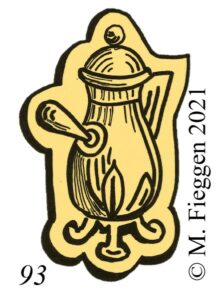
093. Coffee pot hallmark, small gold and silver recall mark
Coffee pot hallmark, small gold and silver recall hallmark, departments of the 1ʳᵉ division: North, 1819. The information about the coffee pot hallmark and the
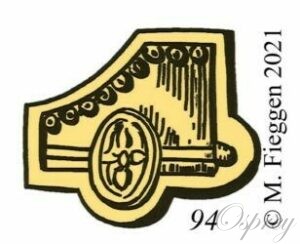
094. Chariot hallmark, small gold guarantee
Chariot hallmark, small gold guarantee, departments of the 1ʳᵉ division: North, August 16, 1819 to May 9, 1838. Information about the chariot hallmark and the
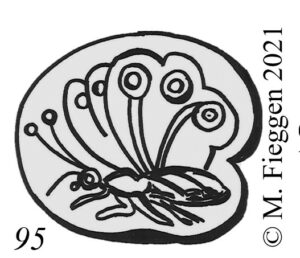
095. Butterfly hallmark, small silver guarantee
Butterfly hallmark, small silver guarantee, departments of the 1st division: North, August 16, 1819 to May 9, 1838. Information about the butterfly hallmark and other
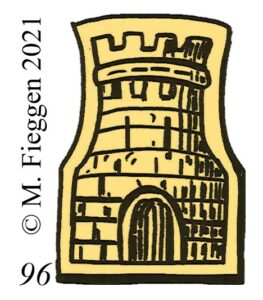
096. Tower hallmark, small gold and silver recall
Hallmark of the tower, recall mark for small items in gold and silver, departments of the 2nd division: Northeast, 1819. Information on the tower hallmark
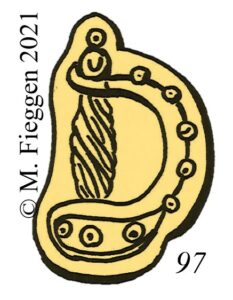
097. Sword hilt hallmark
Hallmark of a sword hilt, small gold guarantee, departments of the 2nd division: Northeast, August 16, 1819 to May 9, 1838. The information on the

098. Turtle hallmark, small silver guarantee
Turtle hallmark, small silver guarantee, departments of the 2nd division: Northeast, August 16, 1819 to May 9, 1838. Information about the turtle hallmark and the
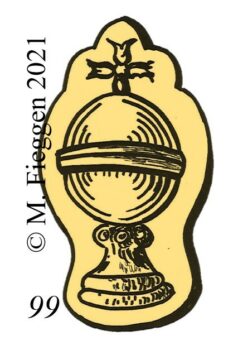
099. Ciborium hallmark, gold and silver recall mark
Ciborium hallmark, small gold and silver recall mark, departments of the 3rd division: Eastern Region, 1819. The information on the ciborium hallmark and the other
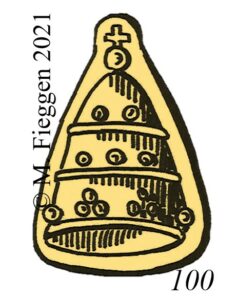
100. Tiara hallmark, small gold guarantee
Tiara hallmark, small gold guarantee, departments of the 3rd division: East, August 16, 1819 to May 9, 1838. The information on the tiara hallmark and
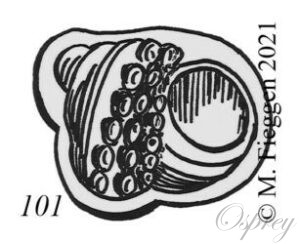
101. Shell hallmark, small silver guarantee
Shell hallmark, small silver guarantee, departments of the 3rd division: East, August 16, 1819 to May 9, 1838. Information about the shell hallmark and other
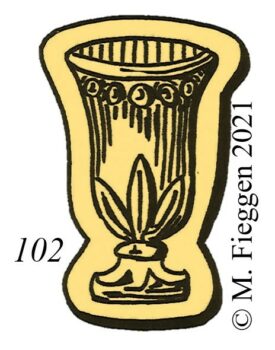
102. Goblet hallmark, small recall mark of gold and silver
Goblet hallmark, small recall mark of gold and silver items, departments of the 4th division: South-East, 1819. Information about the goblet hallmark and other hallmark
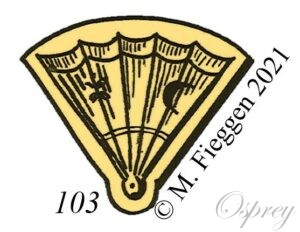
103. Fan hallmark, small gold guarantee
Fan hallmark, small gold guarantee, departments of the 4th division: South-East, August 16, 1819 to May 9, 1838. The fan hallmark information and other hallmark
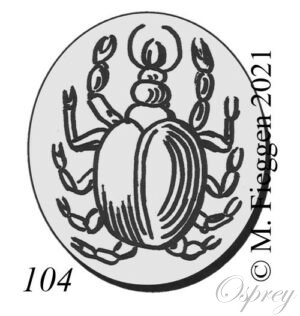
104. Trombidion hallmark, small silver guarantee
Trombidion hallmark, small silver guarantee, departments of the 4th division: South-East, August 16, 1819 to May 9, 1838. The information on the trombidion hallmark and
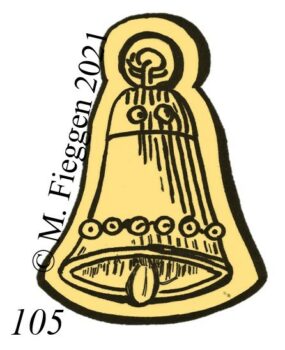
105. Bell hallmark, small gold and silver recall mark
Bell hallmark, small gold and silver recall hallmark, departments of the 5th division: South, 1819. The information about the bell hallmark and other hallmark illustrations
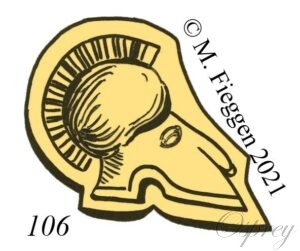
106. Helmet hallmark, small gold guarantee
Helmet hallmark, small gold guarantee, departments of the 5th division: South, August 16, 1819 to May 9, 1838. The information on the helmet hallmark and
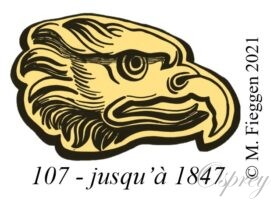
107. Eagle’s head hallmark to the right type I surrounded by a listel, for small objects in 750/000 gold. Type I
107 . Eagle’s head hallmark to the right type I surrounded by a listel, for small objects in 750/000 gold. Paris 1838-1847. The information on
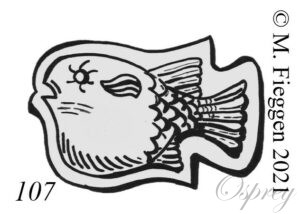
107. Fish hallmark, small silver guarantee
Fish hallmark, small silver guarantee, departments of the 5th division, South, August 16, 1819 to May 9, 1838. The information on the fish hallmark and
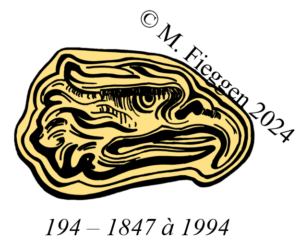
108. Retouched eagle’s head hallmark. Type II
Retouched eagle’s head hallmark (following counterfeits), surrounded by a double listel, limited warranty mark for small works in 750/000 gold. Paris 1847-1919, then Paris and
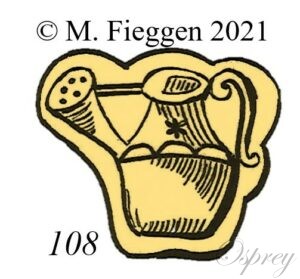
108. Watering can hallmark, small gold and silver recall mark
Watering can hallmark, small gold and silver recall mark, departments of the 5th division: South, 1819. The information about the watering can hallmark and the
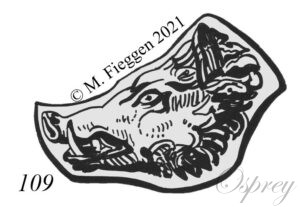
109. Boar’s head hallmark to the left
Boar’s head hallmark to the left surrounded by a listel, limited warranty mark for small works in 800/000 silver. Paris. In use from 1838 to
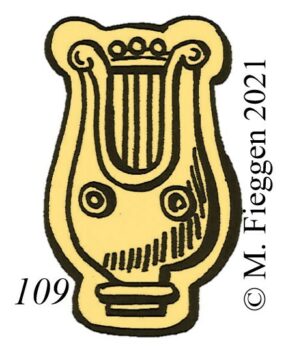
109. Lyre hallmark, small gold guarantee
Hallmark of lyre, small gold guarantee, departments of the 6th division: South-West, August 16, 1819 to May 9, 1838. The information on the lyre hallmark
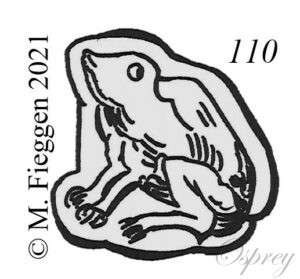
110. Frog hallmark, small silver guarantee
Frog hallmark, small silver guarantee, departments of the 6th division: South-West, August 16, 1819 to May 9, 1838. The information on the frog hallmark, and
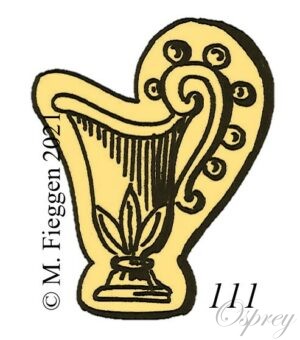
111. Hallmark of vase, small recall mark of gold and silver
Vase hallmark, small recall mark for gold and silver, departments of the 7th division: West, 1819. The information about the vase hallmark and the other
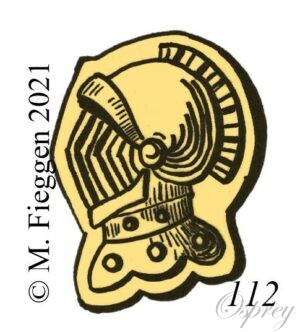
112. Hallmark of morion, small gold guarantee
Hallmark of morion, small gold guarantee, departments of the 7th division: West, August 16, 1819 to May 9, 1838. The information on the morion hallmark
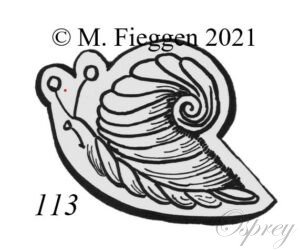
113. Snail hallmark, small silver guarantee
Snail hallmark, small silver guarantee, departments of the 7th division: West, August 16, 1819 to May 9, 1838. The information on the snail hallmark, and
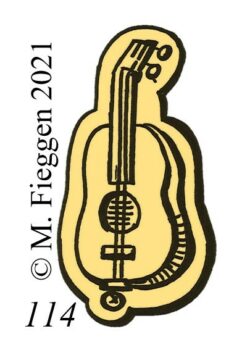
114. Guitar hallmark, small gold and silver recall mark
Guitar hallmark, small gold and silver recall mark, departments of the 8th division: North-West, 1819. The guitar hallmark information and the other hallmark illustrations on
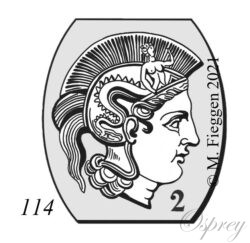
114. Minerva head hallmark with lock of hair on the temple
Hallmark of Minerva’s head with lock of hair on the temple in a truncated oval frame. Number 2 under the chin for 2nd title (800/000).
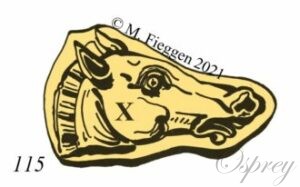
115. Horse’s head hallmark facing right
Horse’s head hallmark facing right with assay office mark on the cheek, surrounded by a shaped border. Limited warranty mark for small objects in 18
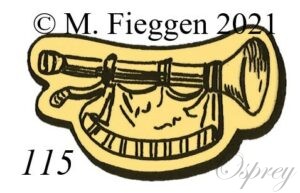
115. Trumpet hallmark, small gold guarantee
Trumpet hallmark, small gold guarantee, departments of the 8th division: North-West, August 16, 1819 to May 9, 1838. Trumpet hallmark information and other hallmark illustrations
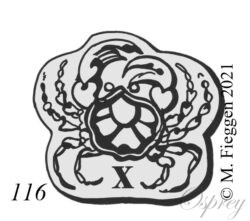
116. Crab hallmark in a shaped frame
Crab hallmark in a shaped border with assay office mark between the legs, limited warranty mark for small items in 800/000 silver. Departments from 1838
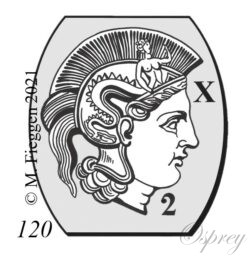
120. Hallmark of Minerva’s head without lock of hair on the temple in a truncated oval frame.
Hallmark of Minerva’s head without lock of hair on the temple in a truncated oval frame. Number 2 under the chin for 2nd title silver
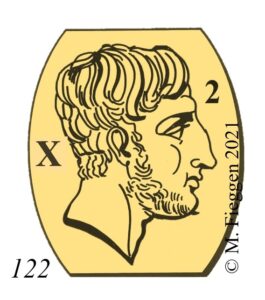
122. Hallmark of a Greek doctor’s head facing right
Hallmark of a Greek doctor‘s bust facing right in a truncated oval frame, number 2 in front of the forehead for 840/000 gold. Assay office
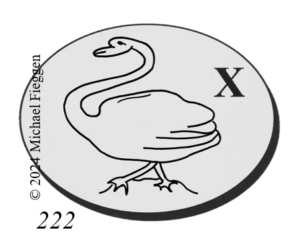
124. Swan hallmark in profile facing left in an oval frame.
Swan hallmark in profile facing left in an oval frame. Introduced in 1893 for imported silver watch cases, it has also been a so -called
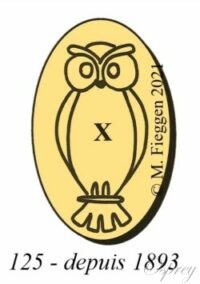
125. Owl hallmark seen from the front in an oval frame.
Owl hallmark seen from the front in an oval frame. Stamped on imported gold jewellery, it is also since 1902 a so -called chance hallmark,
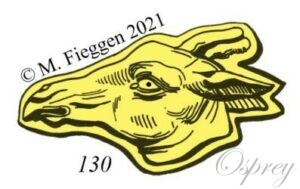
130. Giraffe head hallmark facing left surrounded by a listel.
Giraffe head hallmark facing left surrounded by a listel. Recall hallmark of 1838 for large objects in gold and silver. Paris. The information on the
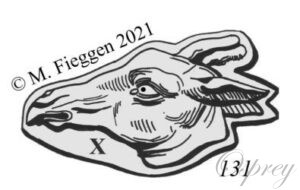
131. Giraffe head hallmark to the left
Giraffe head hallmark to the left with assay office mark under the muzzle, in a shaped border. Recall hallmark of 1838 for large objects in
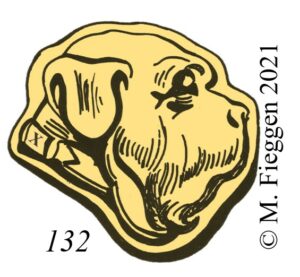
132. Mastiff’s head hallmark to the right
Mastiff’s head hallmark facing right surrounded by a shaped border, assay office symbol inscribed on the collar. Recall mark of 1838 for small objects in
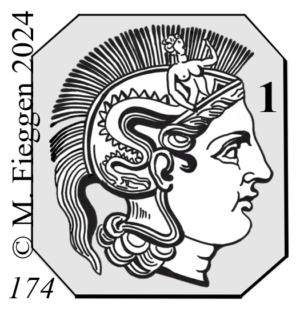
133. Minerva head hallmark in an octagonal frame
Hallmark of Minerva’s head with a lock of hair on the temple in an irregular octagonal frame. Paris from 1838 to 1919. The information on
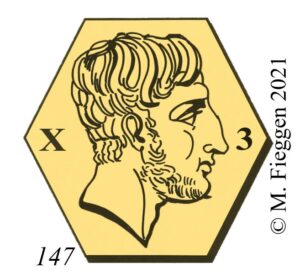
147. Hexagonal hallmark of a Greek doctor’s head facing right
Hallmark of a Greek doctor‘s head facing right in a hexagonal frame with the number 3 in front of the nose for third grade gold
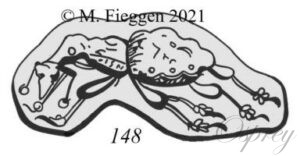
148. Weevil hallmark to the left, Paris
Weevil hallmark to the left surrounded by a shaped border, for imported gold and silver objects. Paris 1838-1864. Information on the left-cut weevil (Paris) hallmark
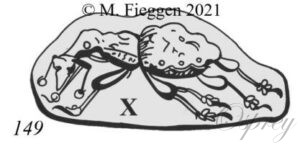
149. Weevil hallmark to left
Weevil hallmark to left with assay office symbol between the legs, in a shaped border, for imported gold and silver objects. Departments 1838-1864. Also exists
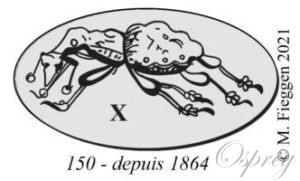
150. Weevil hallmark to the left in an oval frame
Weevil hallmark to the left in an oval frame with the assay office symbol between the legs, for imported gold or silver objects since 1864,
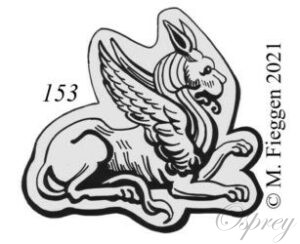
153. Large chimera hallmark facing right, Paris
Large hallmark of a chimera facing right surrounded by a shaped border. For silver import of watches and clocks. Paris from May 10, 1838 to
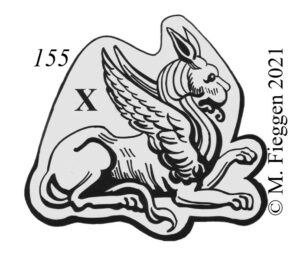
155. Large hallmark of chimera facing right
Poinçon de grande chimère à droite entourée d’un listel avec différent entre l’aile et la croupe Large hallmark of chimera facing right surrounded by a
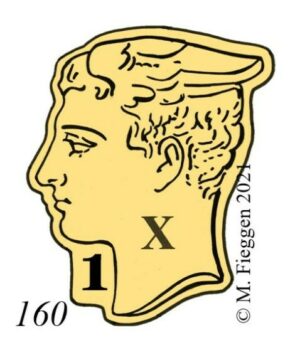
160. Mercury’s head hallmark facing left, gold first title
Mercury head hallmark facing left surrounded by a shaped border, number 1 under the chin and assay office symbol on the neck. For export of
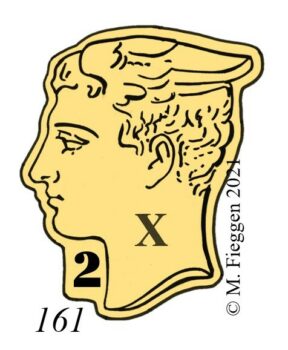
161. Hallmark of Mercury facing left, second gold title
Mercury head hallmark facing left surrounded by a shaped border, number 2 under the chin and assay office symbol on the neck. For export of
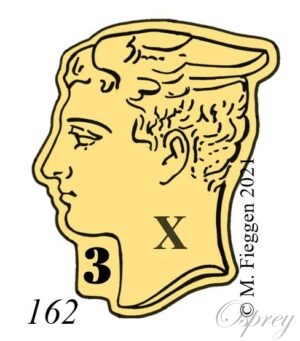
162. Mercury’s head hallmark on the left, third gold title.
Hallmark of Mercury’s head on the left (3rd title) surrounded by a truncated oval frame, number 2 under the chin and different on the neck.
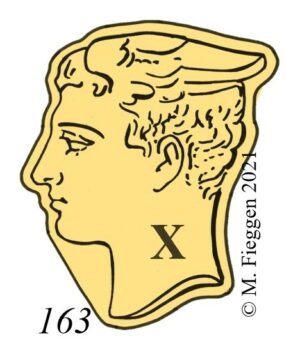
163. Mercury head hallmark to the left surrounded by a listel, export
Mercury head hallmark to the left surrounded by a listel, assay office mark on the neck. For export of small gold objects of 3ᵉ title
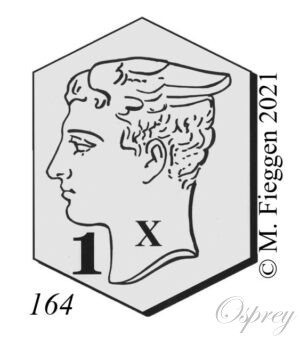
164. Mercury head hallmark facing left in hexagonal frame
Mercury head hallmark facing left in an irregular hexagon, number 1 under the chin and assay office symbol on the neck. For export of first
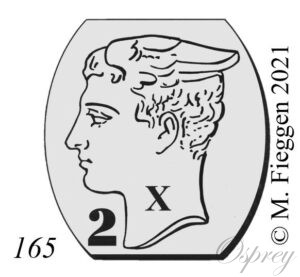
165. Hallmark of Mercury’s head facing left in an oval frame
Mercury head hallmark facing left in a truncated oval frame, number 2 under the chin and assay office symbol on the neck. For export of
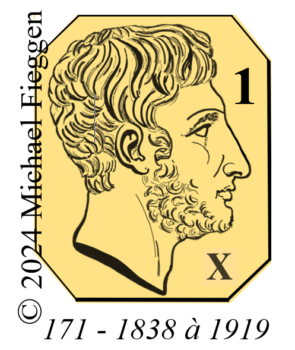
171. Hallmark of a Greek doctor’s head to the right
Poinçon de tête de médecin grec à droite dans un octogone irrégulier, chiffre 1 devant le front pour or 920/000. Différent sous le menton. Selon
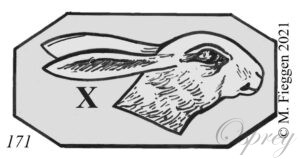
171. Hare’s head hallmark facing right
Hare’s head hallmark facing right in an irregular octagonal frame. Return hallmark stamped on French gold or silver jewellery when re-imported. Assay office symbol under
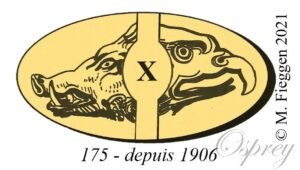
175. Hallmark of juxtaposed boar and eagle heads
Hallmark of boar and eagle heads juxtaposed in an oval frame. New objects in gold and silver with more than 3% of accessory metal. (For
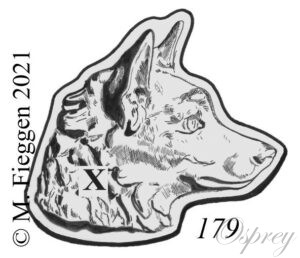
179. Hallmark of a dog’s head to the right cut out and surrounded by a listel.
Hallmark of a dog’s head to the right cut out and surrounded by a listel. Introduced in 1913 (decree of December 5, 1912) for small
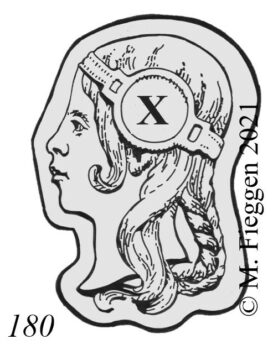
180. Young girl’s head hallmark facing left
Hallmark of a young girl’s head facing left surrounded by a shaped border. For platinum articles intended for export. Assay office mark above the ear
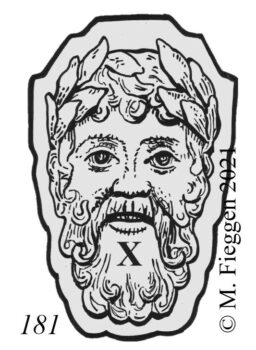
181. Mask hallmark of the head of a bearded man
Mask hallmark of the head of a bearded man, seen from the front, surrounded by a shaped border. For articles in platinum imported from contracting
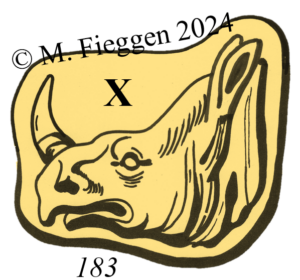
183. Hallmark of rhinoceros head facing left
Rhinoceros head hallmark facing left with a complete horn, surrounded by a shaped border. Remark hallmark stamped every 10 cm on gold chains and flexible
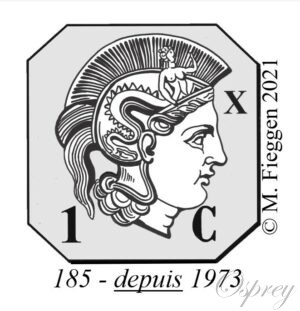
185. Minerva head hallmark
Hallmark of Minerva’s head without lock of hair on the temple in an irregular octagonal frame, provided with a date letter under the chin which




